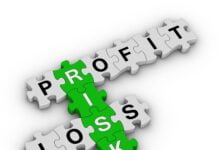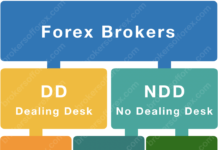Leverage in finance refers to borrowed funds. These funds are generally used to acquire assets like furniture, plant and machinery, real estate, and other physical assets. They are also helpful in trading financial assets such as equities and Forex or foreign exchange.

Copyright : Le Moal Olivier / 123RF Stock Photo
Forex trading has suddenly come into the foreground given the many online shopping channels that have opened up in the past decades. Cheap credit is yet another reason that has boosted the use of Forex in the recent times. However, the use of leverage or borrowed funds in the matter of trading amplifies the effects by leaps and bounds. It doubles the effect on both profits and losses, a risk that is inherent in any kind of trading profession. In Forex this effect becomes more pronounced has having high degrees of leverage in the norm in the trade.
How does leverage work?

If you trade in forex say in the US, your broker will give you the maximum leverage permissible on the major currency pairs: 50:1. It means for every dollar you offer you can trade $50 of a major currency that you trading on. So if you put $2,000 as the collateral in your trading account, it means you can put $10,000 maximum, worth of money in currency trading positions. The said amount of $10,000 will fluctuate depending on how you trade and the profits and losses you generate from trading.
Tips on using leverage
Even though trading with leverage seems to be a tempting one as you are not really putting in your own money into the trading game, you should always be aware of the fact that involving a high degree of leverage in your forex trading can lead you to lose more than your money. So it always helps to use a few precautions when trading in forex using leverage.
Limit your losses – You cannot hope to earn big profits if you have been seeing big amounts in losses over a long period of time. Learn to keep your losses small and within limits and cap them before they get out of your hand.
Strategic stops – Strategic stops help you from going into adverse trading positions overnight due to shifts in the market. You might never know how the market on the other side of the world move while you were fast asleep affecting your trade position my a few hundred pips. Strategic stops help ensure that you are well-protected from losses and also that your profits are secure.
Use a leverage that you find comfortable – Use a leverage you are comfortable with and whose move will not affect you adversely. Suppose you have a leverage of 50:1, it means just an adverse move of 2 percent can wipe off your margin. Being a bit risk-averse has never hurt anyone, so plan your leverage in a way to make sure that you are comfortable with a few market movements.
Don’t overdo it – If you are suffering losses it is not a good idea to try to get out of it by doubling down on it. Many of the biggest trading losses have actually occurred because a losing trader must have added to the losses till it became too big to handle and marked a huge loss. Though in the short run it might seem to be a good idea but eventually it ends up being too late to redeem the already lost situation. It is a better option to cap your losses from the very beginning and trade when the trading situation is comparatively better than back then.
Forex trading with leverage is a good option if you know how much leverage to use and how to handle your profits and losses. It serves better to use strategic stops and using leverage that you find comfortable dealing with. It is always recommended to keep an eye on both profits and losses.









